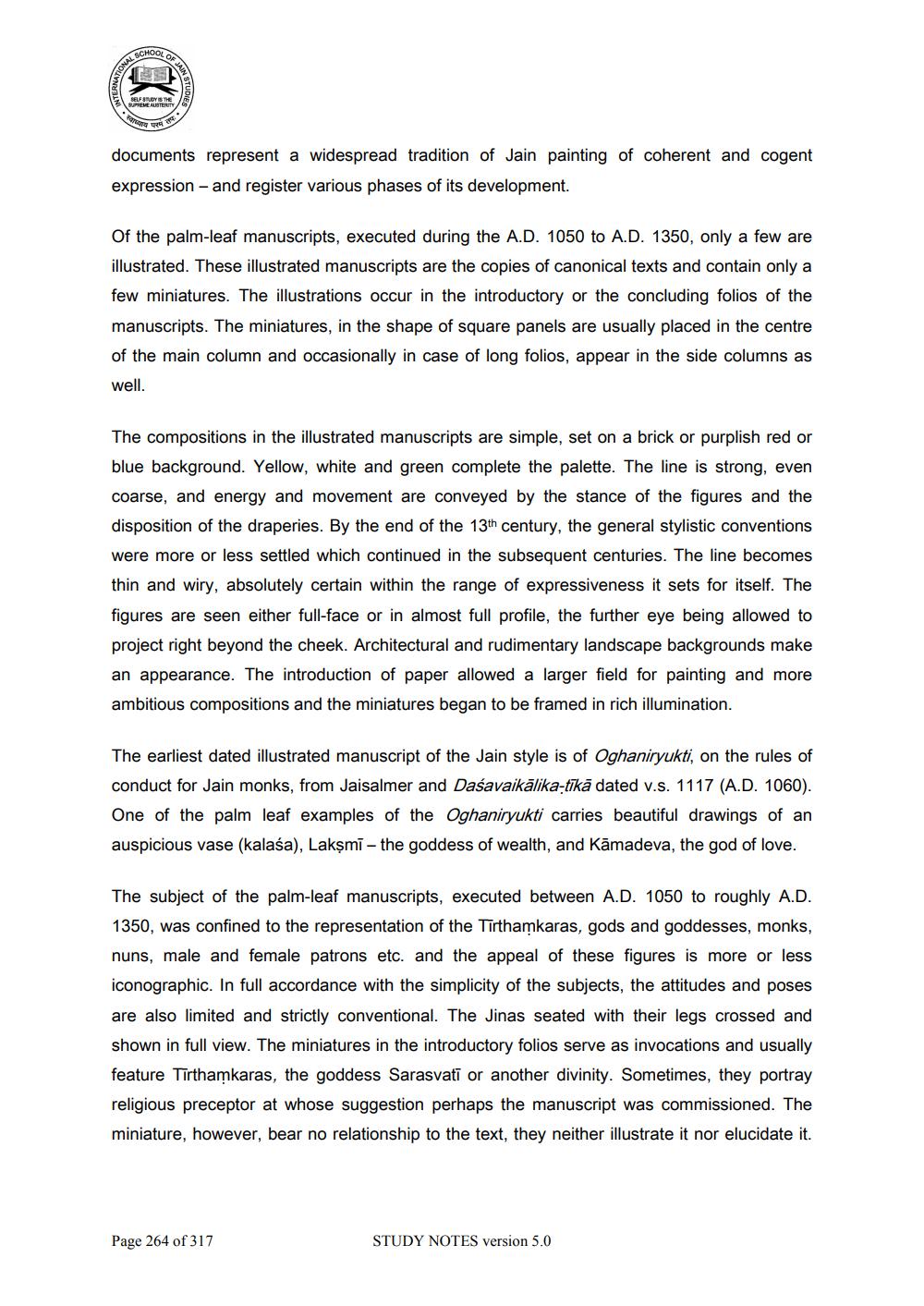________________
SCHOOL
TIONAL
OF
SELF STUDY IS THE SUPREME AUSTERITY,
STUDIES
documents represent a widespread tradition of Jain painting of coherent and cogent expression - and register various phases of its development.
Of the palm-leaf manuscripts, executed during the A.D. 1050 to A.D. 1350, only a few are illustrated. These illustrated manuscripts are the copies of canonical texts and contain only a few miniatures. The illustrations occur in the introductory or the concluding folios of the manuscripts. The miniatures, in the shape of square panels are usually placed in the centre of the main column and occasionally in case of long folios, appear in the side columns as well.
The compositions in the illustrated manuscripts are simple, set on a brick or purplish red or blue background. Yellow, white and green complete the palette. The line is strong, even coarse, and energy and movement are conveyed by the stance of the figures and the disposition of the draperies. By the end of the 13th century, the general stylistic conventions were more or less settled which continued in the subsequent centuries. The line becomes thin and wiry, absolutely certain within the range of expressiveness it sets for itself. The figures are seen either full-face or in almost full profile, the further eye being allowed to project right beyond the cheek. Architectural and rudimentary landscape backgrounds make an appearance. The introduction of paper allowed a larger field for painting and more ambitious compositions and the miniatures began to be framed in rich illumination.
The earliest dated illustrated manuscript of the Jain style is of Oghaniryukti, on the rules of conduct for Jain monks, from Jaisalmer and Daśavaikālika-tīkā dated v.s. 1117 (A.D. 1060). One of the palm leaf examples of the Oghaniryukti carries beautiful drawings of an auspicious vase (kalasa), Laksmi - the goddess of wealth, and Kamadeva, the god of love.
The subject of the palm-leaf manuscripts, executed between A.D. 1050 to roughly A.D. 1350, was confined to the representation of the Tirthamkaras, gods and goddesses, monks, nuns, male and female patrons etc. and the appeal of these figures is more or less iconographic. In full accordance with the simplicity of the subjects, the attitudes and poses are also limited and strictly conventional. The Jinas seated with their legs crossed and shown in full view. The miniatures in the introductory folios serve as invocations and usually feature Tirthamkaras, the goddess Sarasvati or another divinity. Sometimes, they portray religious preceptor at whose suggestion perhaps the manuscript was commissioned. The miniature, however, bear no relationship to the text, they neither illustrate it nor elucidate it.
Page 264 of 317
STUDY NOTES version 5.0




